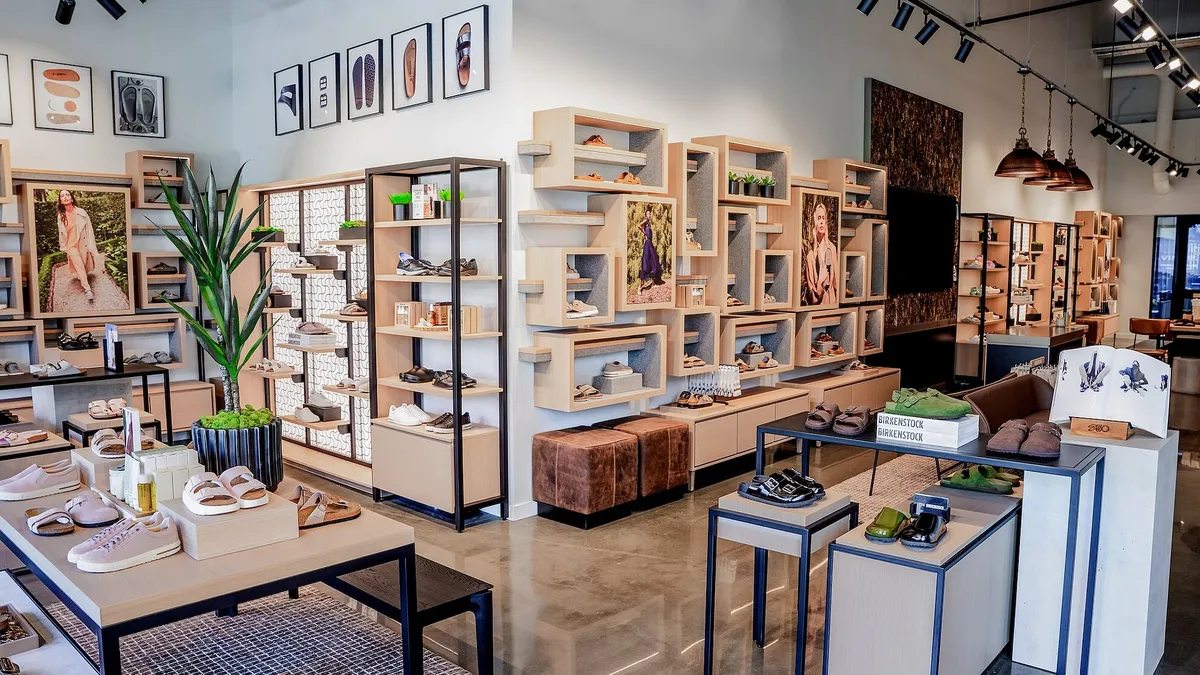Fulfillment for e-commerce requires three times the warehousing space of traditional brick-and-mortar store inventory, given the greater variety of SKUs and space-intensive shipping and parcel operations. With e-commerce growing in the pandemic, supply chain players are scooping up space where they can find it, especially if it's close to areas with high population density.
Amazon is reportedly in talks with Simon Property Group to take over mall spaces left vacant by closed department stores, namely those that once belonged to J.C. Penney and Sears. An anonymous source told The Wall Street Journal that Amazon would turn these spaces into online fulfillment centers.
Amazon and Simon have been tight lipped about if it’s really happening, and why. "Amazon has a policy of not commenting on rumors or speculation," an Amazon spokesperson said in an email, and Simon didn't respond to a request for comment.
But experts see multiple reasons for e-tailers such as Amazon to make this move, from cost savings to an enhancement of the omnichannel experience for consumers.
"You’ve got this deeply discounted floor space in urban areas with huge parking facilities and customer density all around," said John Impellizzeri, professor of professional practice in supply chain management at Rutgers Business School. "It could turn out to be a really brilliant play here, if they can get it at the right price."
Plentiful, cheap and easy-ish to convert
One reason to convert retail space to fulfillment is cost.
Malls are figuring out what they’re going to be next, as shopping has shifted online and anchor department stores go out of business. In 2019, 9,548 stores closed, and Coresight estimates as many as 15,000 could shutter this year.
Mall space is cheap, as low as $4 per square foot, said Impellizzeri. Department store space typically costs closer to $20 per square foot, Alexander Goldfarb, real estate investment trust analyst at Sandler O’Neill + Partners, told CNBC. Warehousing space averaged $6.50 per square foot in a 2017 survey.
"You’ve got this deeply discounted floor space in urban areas with huge parking facilities and customer density all around ... It could turn out to be a really brilliant play."

John Impellizzeri
Professor at Rutgers Business School
Transitioning department stores to fulfillment centers wouldn’t be that difficult, Impellizzeri said. "Copying and pasting fulfillment centers into floor space is their core competency."
These spaces aren’t perfectly set up for warehousing, though. Fulfillment and distribution facilities typically have inbound and outbound bays, but retail stores usually have just one set, he said.
Department stores with multiple floors may present a challenge, too, said Michael Brown, partner at Kearney. They "are not that easily accessible through the automation that Amazon uses for their facilities," he said.
Amazon may also run into zoning laws. "That is reality in many of the suburban malls, where trucks might not be able to enter during certain hours of the night or times of the day," Brown said, which isn’t typically an issue for warehouses or industrial locations.
Shifting logistics to the consumers
Putting fulfillment centers in more places can help make delivery even faster, said Brown. "Getting closer to the consumer, to be able to expedite delivery from two days to one day to same day is critical in the evolution of [Amazon's] business model," he said. "Bankrupt department stores are in that close proximity to the customer that they can easily get to them."
Because this move potentially puts fulfillment centers in so many locations near consumers, it could also push delivery and reverse logistics onto consumers. If customers are willing to drive to a fulfillment center to pick up an item because it’s faster than delivery, or drop off a return because it’s easier than re-boxing an item and taking it to a UPS store or a post office, that saves the retailer money.
Amazon is saying "let’s get the consumer involved in returns, let them do those last couple miles of driving rather than outsourcing it to someone that we pay," said Impellizzeri. "That’s the play, and we think it’s brilliant."
Physical locations round out omnichannel strategy
One thing e-tailers are missing is a physical presence, said Brown.
Creating fulfillment centers all over the U.S. gives Amazon a way to compete with Target and Walmart, both of which have used stores during the pandemic to execute omnichannel strategies, such as ship from store and curbside pickup. Amazon can’t offer curbside pickup if there’s no curb to pick up from.
"Trucks might not be able to enter during certain hours of the night or times of the day."

Michael Brown
Partner at Kearney
Dan Neiweem, principal and co-founder of Avionos, said this is a natural progression from Amazon buying Whole Foods. With grocery, "there’s a lot of repeat ordering and you have a captive market," he said.
The same is true for regular online shoppers, and Amazon’s only weak spot in offering a complete omnichannel experience has been with physical shopping. "I think what they’re really looking at is not just shells. I see them actually wanting to use those locations so you can come in, buy, shop and actually take items off the shelf," Neiweem said.
In a way, this move could turn department store spaces back towards their original functions.
The J.C. Penney and Sears catalog model "allowed consumers to purchase goods over the phone and then pick them up at the local retail of their choice, which in most rural communities was essentially just a front counter and a back room storing the products," Johnathan Foster, principal consultant at Proxima Group wrote in an email. "If these box-retailers are consumed by Amazon ... the e-commerce giant is refreshing the model created by J.C. Penney and Sears 30 or 40 years ago."






















